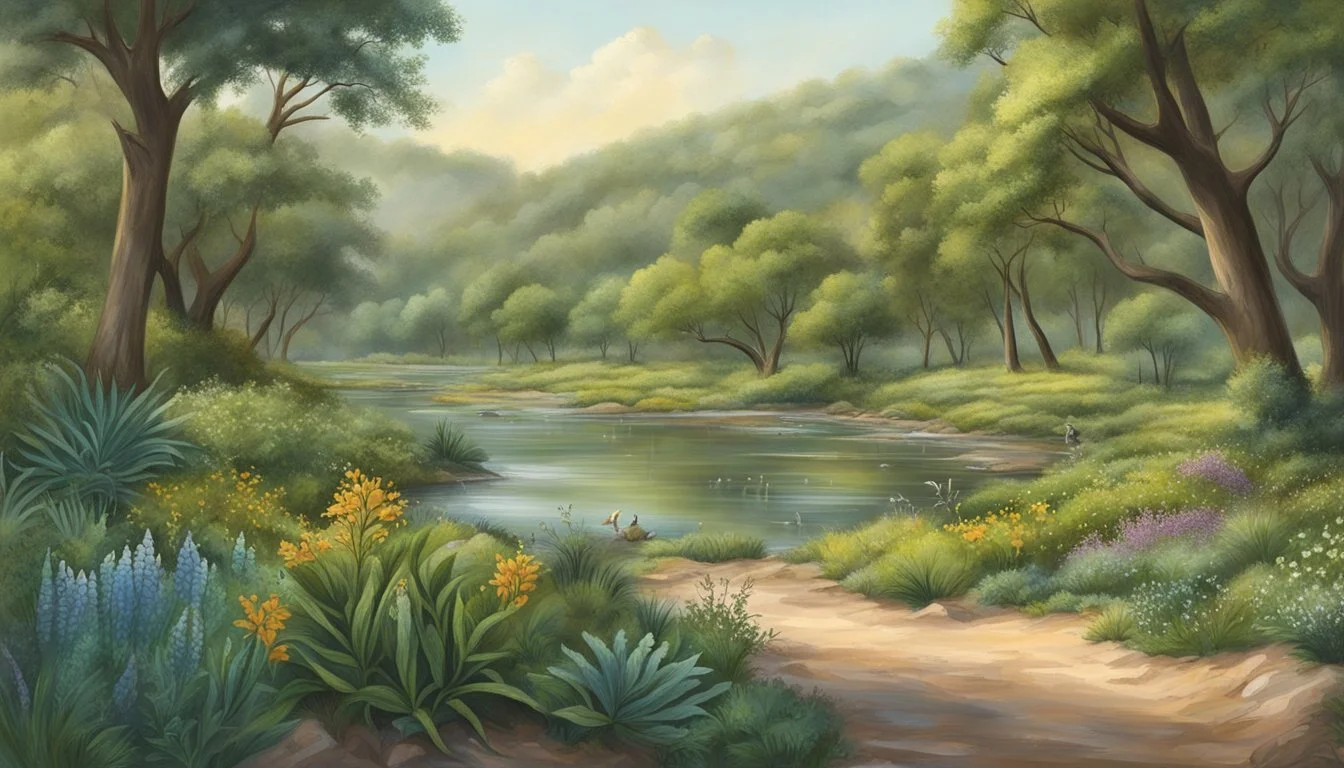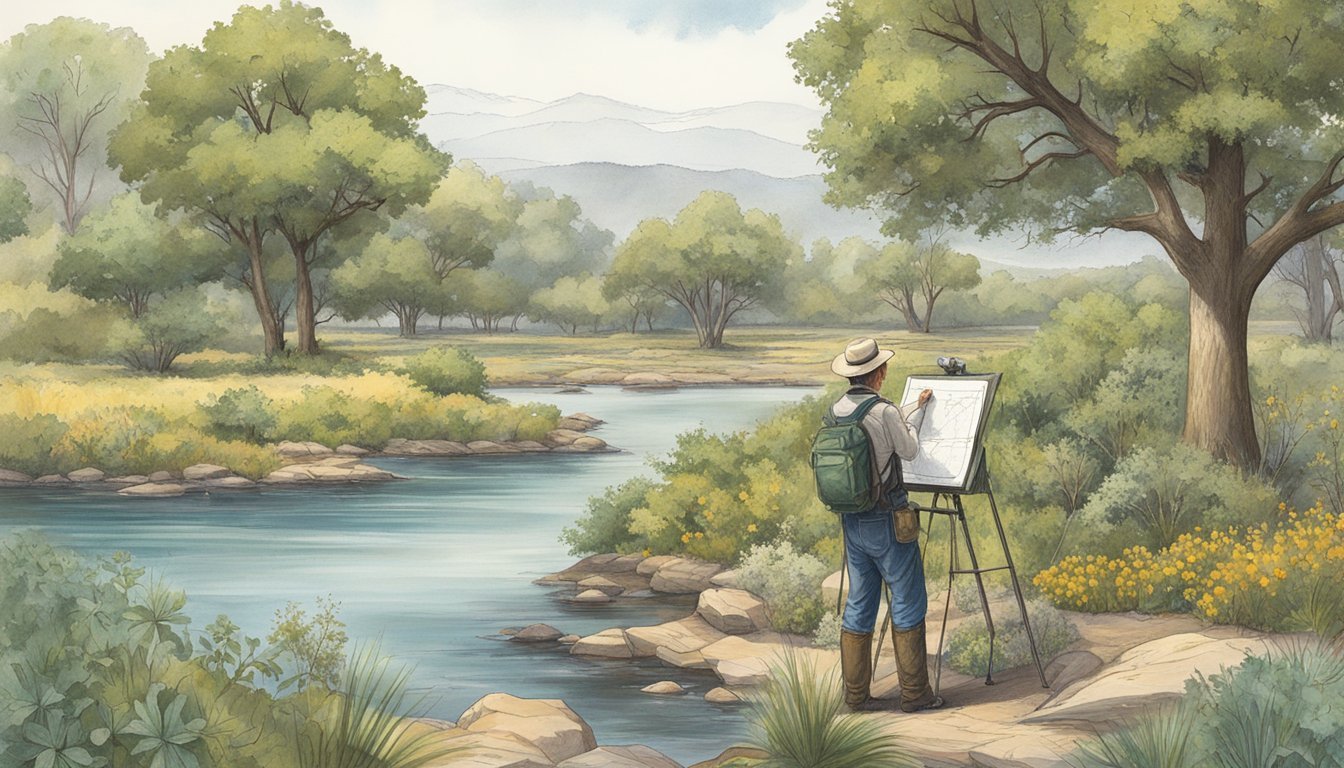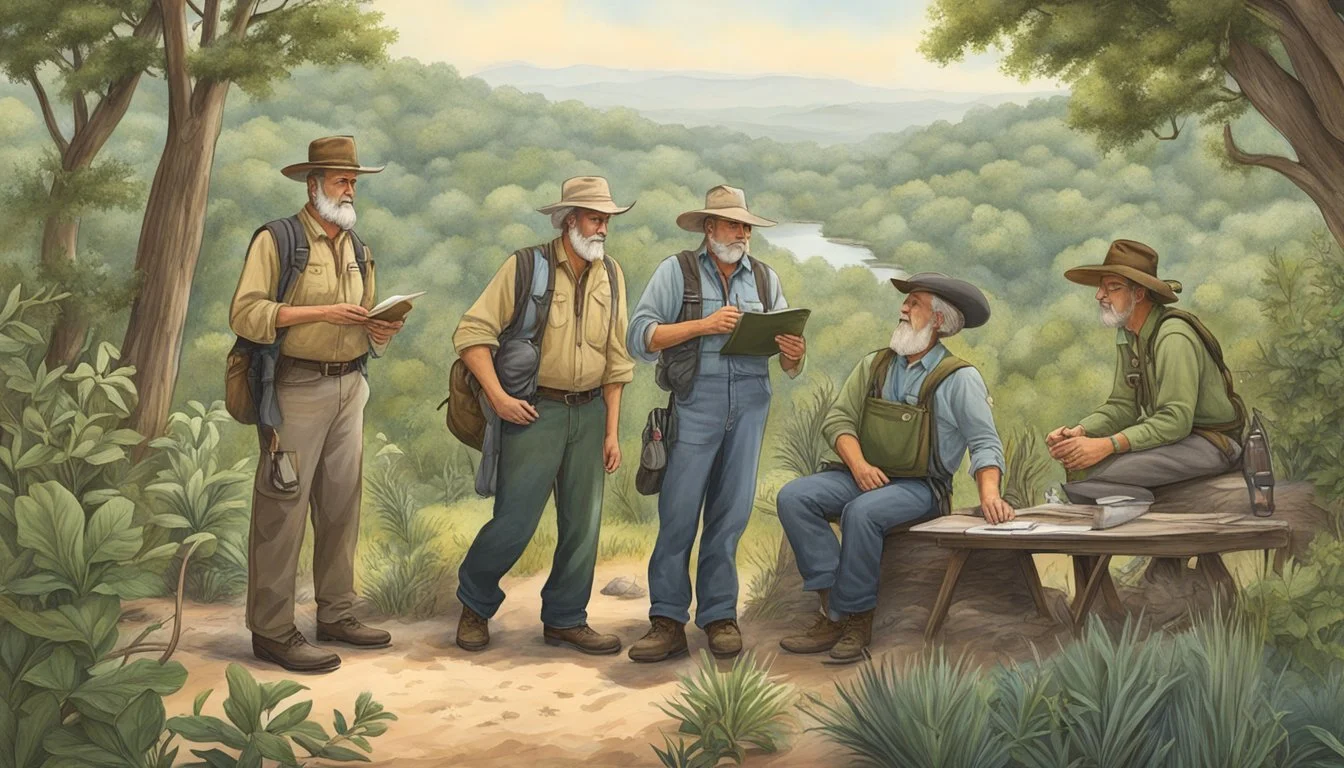The Legacy of German Texan Scientists and Naturalists
Pioneers in New World Exploration
The legacy of German-Texan scientists and naturalists is a testament to the indelible impact a group of immigrants can have on the scientific and cultural development of a region. In the 19th century, Texas became a focal point for German naturalists who found the state's vast and diverse landscapes an uncharted treasure trove for scientific inquiry. These naturalists, often sent by their homeland to catalog the flora and fauna of Texas, contributed to the wider scientific understanding of North America. Their meticulous observations and collections were among the first detailed accounts of the Texan ecosystem, providing insights into the region's unique biodiversity.
One pivotal figure was Ferdinand Lindheimer, known as the Father of Texas Botany, who collaborated with the New Braunfels Independent School District and Humanities Texas to provide educational resources. His work alongside other German-Texan scientists paved the way for future generations of naturalists. These individuals not only studied the landscape but also enriched the cultural fabric of Texas, blending German and Texan influences in their work and lives.
Through their dedication and scholarly pursuits, these pioneering naturalists left an enduring legacy. They provided foundational knowledge of Texas' natural world and set a standard for scientific exploration. Their contributions continue to resonate in modern scientific endeavors and educational initiatives, showcasing the deep roots of German influence in the scientific heritage of Texas.
The Origins of German Influence in Texas
The German influence in Texas began in the 19th century with early settlers establishing distinctive German communities. Two pivotal entities in this migration were Prince Carl of Solms-Braunfels and the society known as Adelsverein, which played crucial roles in organizing and supporting the immigration of Germans to Texas.
Early German Immigration to Texas
German immigration to Texas initiated significantly in the 1830s, following reports from early settlers who described Texas as a land of opportunity. The first wave of German immigrants included farmers, intellectuals, and craftsmen seeking new beginnings. They were attracted by the prospect of economic stability and the appeal of vast lands. By the 1850s, the German Texan community had expanded, with the population estimated to be nearly 20,000. Settlements such as Fredericksburg and New Braunfels became focal points of German culture, preserving their heritage within a Texan context.
Prince Carl of Solms-Braunfels and the Adelsverein
In 1844, Prince Carl of Solms-Braunfels was dispatched to Texas to oversee the settlement efforts of the Adelsverein, also known as the Society for the Protection of German Immigrants in Texas. The Adelsverein was established to support the mass emigration of Germans and the establishment of new settlements. Prince Carl's role was instrumental in founding New Braunfels in 1845, which he named after his homeland. Fredericksburg followed soon after, named in honor of Prince Frederick of Prussia. These settlements became central to the German immigrant community, contributing to the unique cultural landscape of Texas.
Settlement and Expansion
During the 19th century, German Texans played a pivotal role in the establishment of new communities, transforming agriculture and introducing distinctive architecture styles. They also founded educational institutions that have contributed to the region’s cultural and social landscape.
Establishing New Communities
German settlers contributed to the expansion of Central Texas, particularly in the Hill Country. They established tight-knit communities that preserved their German heritage. New Braunfels and Fredericksburg are examples of towns that thrived as a result of German settlement. These communities became centers for further German Texan cultural and economic development.
Agriculture and Ranching
Agriculture became a cornerstone of German Texan communities, with many settlers leveraging their farming expertise. They cultivated crops suited to the region's climate and introduced advanced European techniques to increase productivity. In terms of ranching, German Texans also excelled, promoting the cattle industry and contributing to Texas' reputation as a leader in ranching.
Architecture and Fachwerk
German influence is evident in the unique architectural style known as Fachwerk, a timber-frame construction method. This style is especially apparent in the Hill Country, where numerous structures bear this hallmark. The use of local materials and German design principles exemplifies the adaptation and resilience of these communities.
Education and the German Free School
Education was highly valued by German Texans, leading to the establishment of institutions such as the German Free School. Founded in Austin in the mid-19th century, the school showcased a commitment to learning and literacy that was atypical for the frontier at that time. Schools became community focal points, strengthening social ties and ensuring the transmission of knowledge and traditions across generations.
Cultural Integration and Identity
In Texas, the legacy of German scientists and naturalists has significantly influenced local culture, particularly through the preservation and celebration of the German language and traditions in everyday life and festive occasions.
Language and Literature
The German language has remained a core component of Texan-German identity, with many descendants of early settlers retaining linguistic ties to their ancestral heritage. Books and literature have served as essential vehicles for preserving the language: for instance, early immigrant stories and naturalist observations were often recorded in German. This duality of language fosters a unique cultural legacy, manifesting in literature that captures the Texan-German experience.
Music and Opera
Music, especially classical and folk, has been a primary avenue through which German Texans have expressed their cultural identity. Composers like Johann Sebastian Bach have left a lasting impact, with his compositions still being performed in Texas. Opera has likewise had a strong presence, reflecting both the German love of the art form and its integration into Texan culture. These musical traditions continue to be celebrated, maintaining a connection with German heritage while enriching the local arts scene.
Festivals and Culinary Traditions
Festivals play a crucial role in perpetuating German heritage. Events like Oktoberfest and Wurstfest attract visitors statewide, showcasing German culture through music, dance, and especially food. Traditional culinary offerings like pretzels, schnitzel, and various wursts connect people to German cuisine's (What Wine Pairs Perfectly With German Cuisine) rich flavors and longstanding traditions. These community gatherings are not only festive but also reinforce the shared history and identity among German Texans.
Contributions to Knowledge and Science
The German Texan scientists and naturalists have made significant strides in understanding the rich biodiversity of Texas and fostering scientific education in the region. From pioneering botanical research to establishing educational institutions, their legacy is evident in the profound body of knowledge that continues to influence contemporary science and education.
German Texan Scientists and Naturalists
Ferdinand Lindheimer, known as "The Father of Texas Botany," is one of the most notable German Texan naturalists. He collected and cataloged numerous plant species across Central Texas, significantly expanding the scientific community's knowledge of the region's flora. His work laid the foundation for future botanical studies and underscored the importance of preserving plant specimens for research.
Botanical Research and Herbaria
Botanical Research:
Ferdinand Lindheimer: Identified and documented hundreds of plant species.
Herbaria Contributions: Stored plant specimens vital for future research.
The meticulous botanical research conducted by German Texan scientists has been critical in the preservation of knowledge on regional plants. Herbaria, which serve as repositories for collected plant specimens, are key to this preservation. They have been instrumental in housing specimens which are used for taxonomic and ecological studies, and offer a historical record of biodiversity.
Development of Educational Institutions
Southern Methodist University (SMU): Houses extensive archival material on Texas naturalists.
Universities Role: Pivotal in advancing scientific education in Texas.
Educational institutions in Texas have benefited greatly from the groundwork laid by German Texan naturalists. Universities, including SMU, not only serve as custodians of historical scientific documents but also continue to develop educational programs in the sciences. They play a vital role in nurturing new generations of scientists and promoting ongoing research in the field of botany and natural history.
German Texan Legacy in Modern Texas
The legacy of German Texan scientists and naturalists continues to shape the cultural and material landscape of modern Texas. From historical preservation efforts to distinct contributions in architecture and social structures, their impact resonates through various spheres of Texan life.
Preservation of History and Heritage
German Texans have been instrumental in historical conservation. The Sophienburg Museum in New Braunfels is a prime example, where they meticulously document the German immigration and settlement experience. The preservation of German heritage is evident through artifacts, archives, and storytelling, ensuring that the history remains accessible to future generations.
Material Culture and Craftsmanship
The material culture of German Texans is reflected in their craftsmanship, notably seen in houses, furniture, and churches. These structures and items bear distinct German influences, recognized for their durability and stylistic elements. Many communities continue to cherish and maintain these historical buildings, which serve as a testament to German craftsmanship and architectural thought.
Influence on Urban and Social Fabric
The German Texan influence extends to the urban development and social fabric of modern Texas. Their tradition of establishing tight-knit communities, like those in Fredericksburg and New Braunfels, is a notable aspect of their legacy. These areas still exhibit a strong sense of community with a German flair, reflected in town layouts, local businesses, and cultural events that honor their German roots.
Challenges and Resilience
The legacy of German Texan scientists and naturalists is one marked by significant challenges, especially during the world wars, and their capacity for resilience. They navigated tumultuous periods of identity politics and cultural evolution, all while contributing to the rich tapestry of German-Texan culture which continues to influence the region today.
The World Wars and German Identity
During World War I and World War II, German Texans faced suspicion and hostility due to their ethnic heritage. The rise of anti-German sentiment in the United States led many to downplay or completely hide their cultural identity. Scientists and naturalists of German descent faced scrutiny and often had to work harder to prove their loyalty to America, sometimes changing their names and language of communication.
Post-War Community Evolution
The aftermath of the world wars saw a gradual evolution of the German-Texan community. Many were keen to assimilate into the wider American culture to avoid political backlash. However, over time, the community began re-embracing its heritage. This renaissance saw the resurgence of German-Texan contributions to science and nature studies, blending their rich legacy with American influences.
Current-State of German-Texan Culture
Today, the German-Texan culture thrives, balancing the act of preserving their historical roots while integrating into the diverse fabric of American society. German Texans continue to celebrate their unique identity through festivals, music, food, and contributions to the sciences, underscoring their resilience in the face of past adversities.








